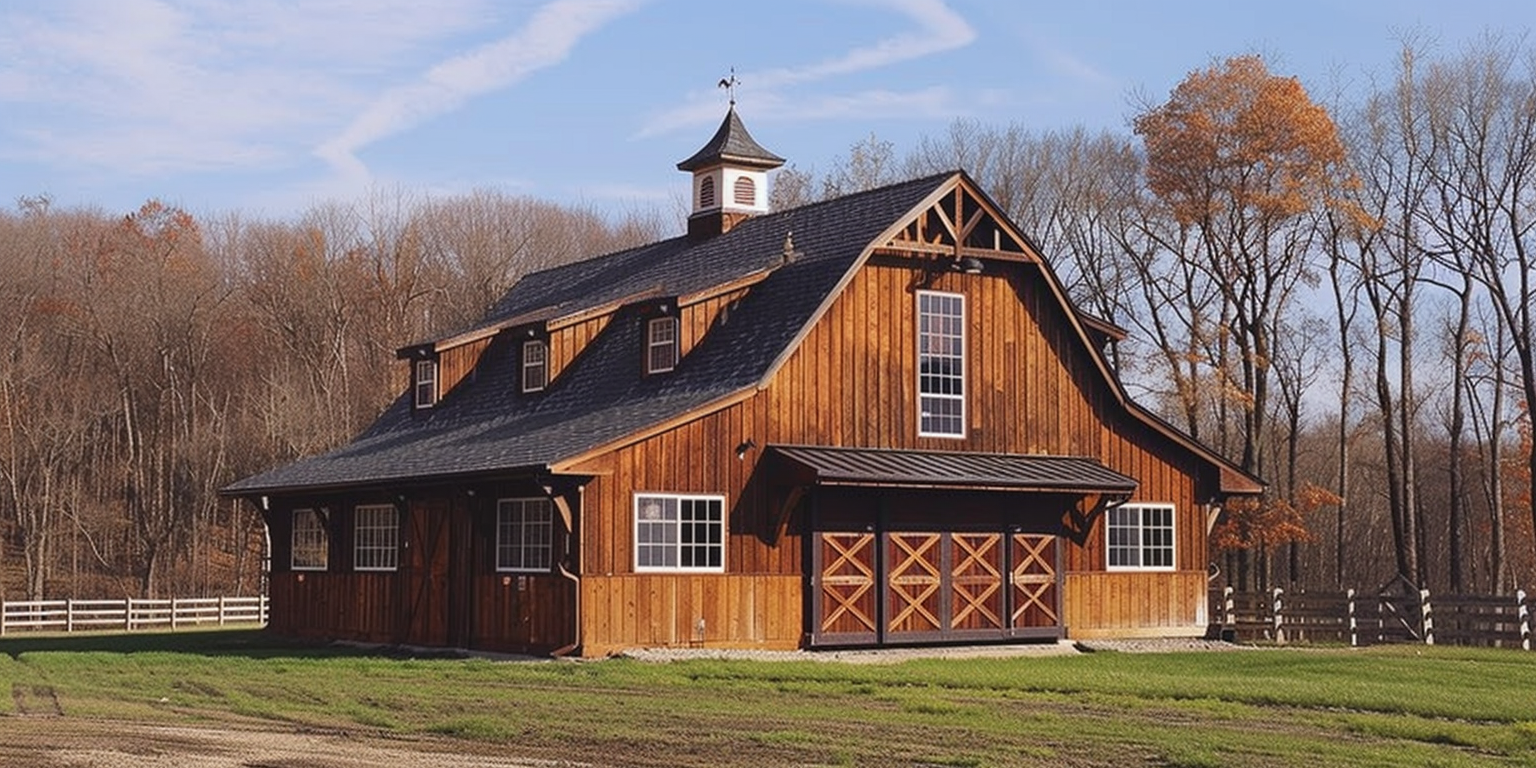If you’re like most people who intend on offering your home and heart to an equine companion in the near future, you undoubtedly want the horse in your life to enjoy a happy, healthy, and comfortable home environment. Here’s what you need to know about building an equestrian barn on your property:
1- Plan for the Future
One of the most important aspects of having an equestrian barn built on your property is to thoroughly consider your future needs. Do you plan on becoming a multiple-horse family at some point, or are you certain that you’ll be satisfied for years to come with sharing your life with a single horse? Keep in mind that multiple horses doesn’t only mean that you’ll need additional stall space — you’ll also need extra room for tack, food storage, and grooming supplies.
2- Prioritize Good Ventilation
Proper ventilation is essential for maintaining the health of your horses. Horses are vulnerable to developing respiratory issues caused by excessive dust and the buildup of ammonia, which is present in their urine. Your barn should have plenty of windows and large doors that open easily to promote optimal air flow. You should also consider adding ridge vents and cupolas for an extra layer of ventilation.
3- Ensure Adequate Drainage
Your barn and the surrounding areas should be free from standing water. Not only can overly saturated ground attract a variety of insect pests, but it can also cause hoof diseases that can lead to lameness if left untreated. Select a site for your barn with a slight elevation to provide natural water runoff, and think about having French drains or other drainage systems installed around the barn’s parameter.
4- Use a Post-Frame Building Design
Also known as a pole barn, post-frame buildings offer horse owners several advantages.
This method is cost-effective, provides flexibility in design, and is faster to build than traditional framing methods. Post-frame buildings easily accommodate large, open spaces without internal support columns, creating more versatile and safer areas for livestock and storage. Additionally, they’re also well-suited for installing insulation, making your barn comfortable for year-round usage.
5- Use Durable, Low-Maintenance Materials
The ideal barn is made from materials that easily withstand the demands of an equestrian environment while requiring a minimal amount of maintenance. For example, metal roofing is long-lasting and provides excellent protection from the elements. Rubber pavers or mats can be used in aisles and stalls to reduce fatigue, and as an added bonus, they are very easy to clean. Consider using hardwoods for stalls and fencing because they are weather-resistant and durable.
6- Incorporate Safe, Functional Stall Design
The comfort and safety of your horses are paramount when designing a barn, so make sure to allow for each horse to have enough stall space so that they can lie down and turn around comfortably. Use sturdy, safe materials without sharp edges or protrusions, and
Use safe, sturdy materials for stall construction, and avoid sharp edges or protrusions. Consider using sliding doors because they are safer and more space-efficient than traditional swinging doors.
7- Design With Daily Workflow in Mind
Design your barn to minimize the time and effort needed to perform daily tasks. Examples include strategic placement of water sources, feed storage close to stalls, and easy access to manure disposal areas. Designate separate areas for grooming, farrier services, and on-site veterinary care to minimize stress and reduce the risk of injury.



